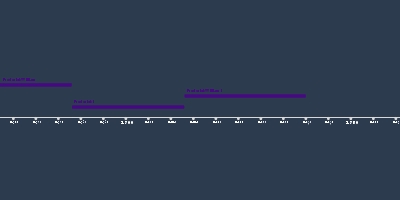New youth culture/Counterculture (1 янв 1960 г. – 1 янв 1970 г.)
Описание:
The baby boomers after World War II created a distinct and international youth culture that was rooted in fashions and musical tastes that set its members off from their elders and fueled anxious comments about a growing “generation gap.” European youth often took inspiration from the U.S. The spread of jazz and rock ‘n’ roll was aided by the LP (long-playing record album) and growth of the corporate music industry. Manufacturers marketed towards these youths.Government subsidies made education more affordable to ordinary people, and enrollments in colleges and universities skyrocketed. However, education also contributed to a counterculture that attacked the ideals of the affluent society of the postwar world and rocked the West in the late 1960s.
A youthful countercultural “sixties generation” criticized the affluent society and the status quo. Counterculture movements drew inspiration from the American civil rights movement, in which African Americans challenged institutionalized inequality, using courts, public demonstrations, sit-ins, and boycotts. Students in the U.S. and western Europe actively protested.
Student activists embraced new forms of Marxism, ultimately leading to the New Left. Generally, New Leftists called for a more humanitarian style of socialism that could avoid the worst excess of both capitalism and Soviet-style communism. They also attacked the conformity of consumer society.
These ideas led to a widespread rebellious lifestyle that merged politics and daily life. The 1960s brought a sexual revolution. Honest discussions on sex, premarital sex, having sex at a younger age, and acceptance of homosexuality became more common. The development of the birth control pill facilitated sexual experimentation. Sexual openness and “free love” apparently moved people beyond traditional norms and could possibly shape a more humane society. Drug use and rock music also encouraged lifestyle rebellion. Counterculture “scenes” developed in many cities.
The Vietnam War increased counterculture and radicalized it. Massive anti-war demonstrations took place, then supported colonial independence movements, demanded an end to the nuclear arms race, and called for world peace and liberation from social conventions of any kind. Political activism erupted in 1968. Martin Luther King Jr.’s assassination led to riots. Police clashed with protesters in Chicago, Mexico City, Tokyo, Berlin, London, and many more cities. In May, French student protests coincided with a general strike that brought the French economy to standstill. The rioting and police clashes of the “May Events” triggered a national revolt. Millions of workers went on strike, protestors occupied factories across France, and the French Fifth Republic was on the verge of collapse. However, the goals of the radical students and the striking workers contradicted, and when the government promised workplace reforms, the strikers backed down. De Gaulle dissolved the French parliament and called for new elections. Most supported his conservative party, and the protests dissipated.
Counterculture activism declined in the 1970s. Committed activists disagreed on the best way to fight for social change. Rudi Dutschke called for internal reform. Other fringe New Left groups like in the U.S., Italy, and West Germany tried violence and terrorism until law enforcement stamped these movements out. Counterculture protests had a huge impact on everyday life but had little revolutionary impact.
Добавлено на ленту времени:
Дата:
1 янв 1960 г.
1 янв 1970 г.
~ 10 years
